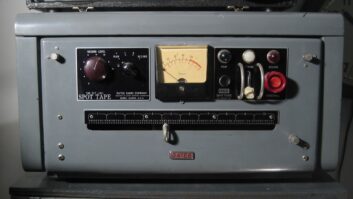The author of this commentary is CEO of Play MPE.

Radio continues to thrive and grow in spite of decades-old predictions of decline. It remains (by far) the single most common way to hear a song. Predicting the future for radio comes with challenges as the digital age of music evolves. As the industry changes from the historical view of terrestrial radio broadcasts to a broader view that includes online streaming, radio will continue to thrive, so long as radio programmers, promoters and other behind-the-scenes curators find the right tech tools to enhance their product and boost their efficiency.
Station listenership is growing and moving to new devices. According to Nielsen’s 2019 mid-year report, there were 7 million more weekly radio listeners in the U.S. than there were in 2016. Terrestrial broadcast is only part of the growth, as one of the most frequent use of a smart speaker is to stream a favorite FM station.
FINDING MUSIC
This is not to say that listeners’ habits aren’t shifting dramatically, because they are. These shifts and the change in expectations that go with them should give anyone pause. Radio professionals will need to find new and innovative ways of getting access to a broader range of content, more quickly, if they wish to compete with rising mediums such as streaming.
Identifying these technological solutions can empower radio professionals to make a positive push towards innovation. The concrete details of this push feel less than revolutionary, but promise to have a vital impact on the way radio programmers can work.

Professionals need the means to find new, appropriate music, anywhere, from any device, at any time. Bringing key tools to mobile, for example, should be an industry priority. Listening to, saving and sharing with colleagues should be easy. The music should be at the center, with technology simply serving to surface new tracks and make them easy to manage.
There are additional important layers that will be ever more essential to decisionmaking for radio teams, and they all involve data of some sort.
This may be contextual assets and information, images, videos, lyrics and other helpful materials that add to the tracks themselves. This data may include analytics and other guides that help a radio pro assess a track’s potential for exciting their audiences and working in their format. In short, the more data radio professionals have access to, the easier it will be for them to evolve with the current shift in expectations. Gaining a deeper understanding of how consumers engage with the music they hear will be key to leading the innovation needed to stay relevant.
The more seamless and accurate our tech tools are behind the scenes, the better radio will fare. It will be able to change and live on, without losing what it does so perfectly: present great music, with a touch of a button, in places and at times when listening is prized most.
Play MPE is a music promotion and delivery service that “connects content from the world’s largest major and independent labels, artists, promoters and managers to thousands of music’s top tastemakers and curators.”
Comment on this or any story to [email protected].







